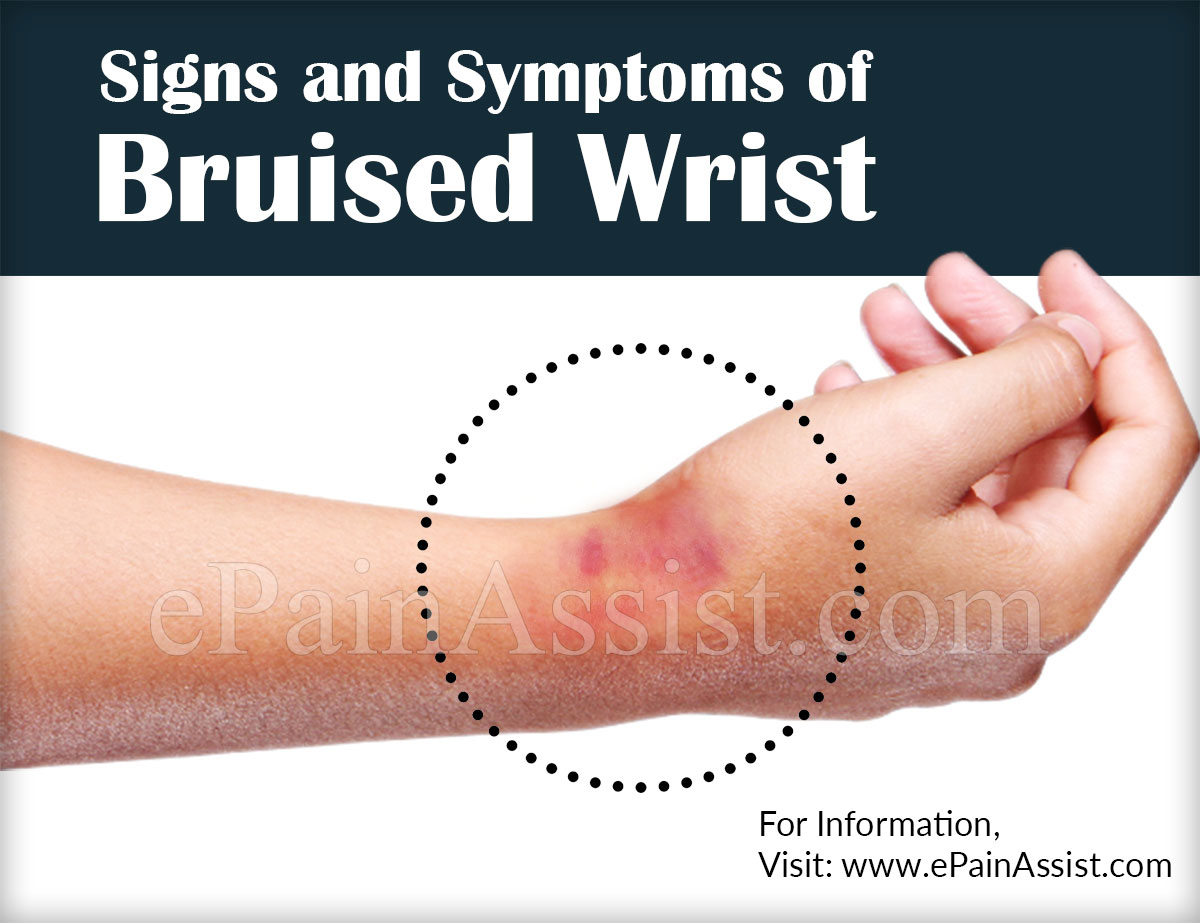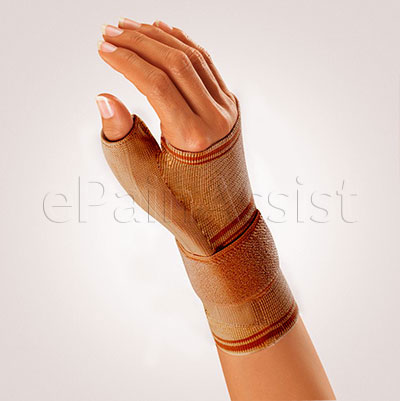Bruised wrist[1] or wrist contusion is the condition which is caused when there is a bruising in the wrist along with the underlying tissues and the skin due to a direct blow. Bruising leads to rupture of the small capillaries that assist the blood to infiltrate tendons, muscles and other soft tissues which force the blood to come out of the ruptured small capillaries.
Causes of Bruised Wrist or Wrist Contusion

- A bruised wrist or wrist contusion may also be caused by a direct blow to the wrist.
- Bruised wrist could also be caused by falling down on outstretched hands.
- Fractured bone can also lead to bruised wrist.
- Car or bike accidents.
- Bruised wrist may also be caused due to mechanical trauma.
- Wrist Contusion or Bruised Wrist causes discoloration of the skin.
- Sports injuries in contact sports could also be a reason for bruised wrist as they involve collision of players with each other or this could also happen in martial arts.
- People suffering with the disorders like hemophilia could be at a higher risk for developing the condition of bruised wrist.
- Using medicines like aspirin or anticoagulants may also increase the risk for developing bruised wrist.
- Occupational injuries can cause bruised wrist.
- Blunt injury to the digits also can cause a bruised wrist.

Signs and Symptoms of Bruised Wrist or Wrist Contusion
- Typically acute pain from an impact.
- Feeling of tenderness while touching the wrist.
- Development of bruising.
- Decreased range of motion in the wrist.
- Pain with movement of the wrist.
- Development of swelling.
- Discoloration beneath the skin starting with redness gradually progressing to black and blue.
- Stiffness in the joints of the wrist.
Treatment for Bruised Wrist or Wrist Contusion[2]
Bruised wrist or wrist contusions generally heal with rest and does not require the medical intervention. Treatment modalities may include:

- RICE protocol which stands for Rest from aggravating activities, Icing, Compression bandage and Elevation of the affected wrist.
- Anti-inflammatory medications may be used to reduce the pain, swelling and inflammation.
- Compression bandage to help reduce swelling and stop bleeding.
- Exercises to improve strength and flexibility.
- Activity modification and training.
- Appropriate plan for return to activity.
Tests to Diagnose Bruised Wrist or Wrist Contusion
A subjective and physical examination is performed to diagnose a bruised wrist or wrist contusion. A thorough neurovascular examination[3] of the hand and the digits is performed to assess for injuries to the nerves and vessels. X-ray may be done to assess and rule out for any underlying fractures.
